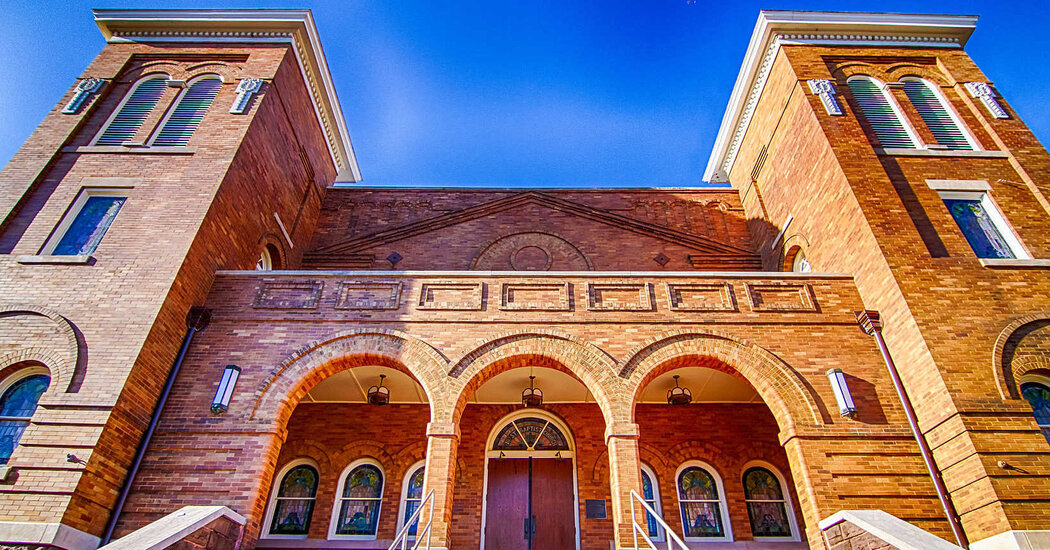Queens, New York City
One of the most famous jazz musicians in the world, Louis Armstrong, along with his wife, Lucille, moved into a modest home in Corona, Queens, in New York City, in 1943. Armstrong lived there until his death in 1971.
In 1983, Lucille Armstrong willed the home and its contents to the City of New York to create a museum and study center dedicated to Armstrong’s career and the history of jazz. The impeccably maintained midcentury modern home feels frozen in time, complete with botanical print wallpaper, teal lacquered kitchen cabinets and a reel-to-reel machine in Armstrong’s den.
The vast museum collection includes 1,600 recordings, 86 scrapbooks, 5,000 photographs and 120 awards — and that’s just from the couple’s personal collection. There’s also a wide variety of materials donated by friends, fans and collectors, such as the 1934 Selmer trumpet given to Armstrong by King George V of England, and nearly every commercially released Armstrong recording collected by his friend, the photographer Jack Bradley. The museum offers daily guided tours and a variety of programs, concerts and seminars throughout the year.
Open Thursday through Saturday from 11 a.m. to 4 p.m.; $15 admission. Tickets must be purchased in advance.
Birmingham, Ala.
The 16th Street Baptist Church, the site of the 1963 bombing that tragically killed four little girls attending Sunday school, is one of the most well-known civil rights-era sites in the United States. Through all the danger and chaos that preceded and followed the attack, which was carried out by Ku Klux Klan members, the church — an early 20th-century, red-brick building with two towers — was the backbone of Birmingham’s Black community. It hosted civil rights meetings, rallies and social events, and served as a refuge for the people dedicated to ending segregation in Alabama.
The church and its congregation are integral to the Birmingham community today, and welcome visitors from around the world for tours and events. Last fall, the new $2.5 million Wallace A. Rayfield Museum (named after the church’s architect) opened inside the former church parsonage. The new museum honors Black civic leaders of the 1880s to the 1920s, including the 16th Street Baptist pastor, the Rev. William R. Pettiford, who founded the Alabama Penny Savings Bank, and Thomas C. Windham, a contractor and church trustee chairman who oversaw construction.
Click Here to Read the Full Original Article at NYT > Travel…
